
De Bente is a smock mill in Dalen, Netherlands. It was built in 1814. The mill has been restored to full working order. It is listed as a Rijksmonument, number 44563

Jan Pol is a smock mill in Dalen, Netherlands. It was built in 1876. The mill is a Rijksmonument, number 44562.

De Boezemvriend or Molen van De Groeve is a smock mill in De Groeve, Netherlands which has been restored to working order. It was built in 1871. The mill is listed as a Rijksmonument, number 41097.

De Wieker Meule is a smock mill in De Wijk, Netherlands. It was built in 1829 and has been restored to working order. The mill is listed as a Rijksmonument, number 39657.
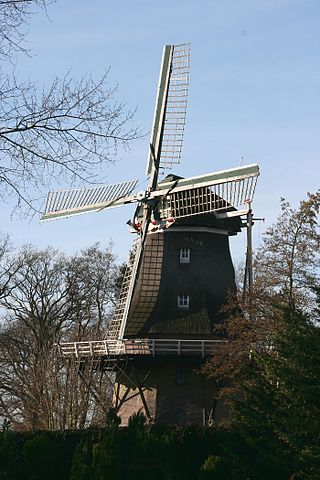
De Heidebloem is a smock mill in Erica, Netherlands. It was built in 1895. The mill is listed as a Rijksmonument, number 14962.

De Eendracht is a tower mill in Gieterveen, Drenthe, the Netherlands. It was built in 1904 and is listed as a Rijksmonument, No. 16132.

De Oudkerkermolen, or Oudkerkemolen is a smock mill in Aldtsjerk, Friesland, Netherlands which has been restored to working order. The mill is listed as a Rijksmonument, number 35674.

De Broekmolen is a smock mill in Broeksterwâld, Friesland, Netherlands which has been restored to working order. The mill is listed as a Rijksmonument, number 11678.
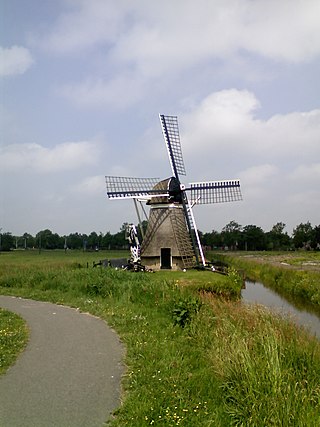
De Mûnts is a smock mill in Buitenpost, Friesland, Netherlands which has been restored to working order. The mill is listed as a Rijksmonument, number 7039.

The Havelter Molen is a smock mill at Havelte, Drenthe, the Netherlands which was built in 1914 and has been restored to working order. The mill is listed as a Rijksmonument, number 21029.

Albertdina is a smock mill in Noord-Sleen, Netherlands. It was built in 1906 and is listed as a Rijksmonument, number 33783.

Paiser Meul is a smock mill in Peize, Drenthe, the Netherlands. It was built in 1898 and is listed as a Rijksmonument, number 32145.
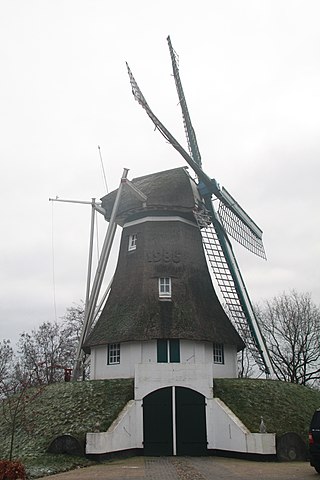
De Hondsrug is a smock mill in Weerdinge, Drenthe, which has been restored to working order. The mill was built in 1910 and is listed as a Rijksmonument, number 14964.

The Cornwerdermolen is a smock mill in Cornwerd, Friesland, Netherlands, which has been restored to working order. The mill is listed as Rijksmonument number 39329.

De Hoop is a smock mill in Dokkum, Friesland, Netherlands which was built in 1849 and has been restored to working order. The mill is listed as a Rijksmonument, number 13186.

Zeldenrust is a smock mill in Dokkum, Friesland, Netherlands which was built in 1862 and has been restored to working order. The mill is listed as a Rijksmonument, number 13097. The name translates as, "Seldom at rest."
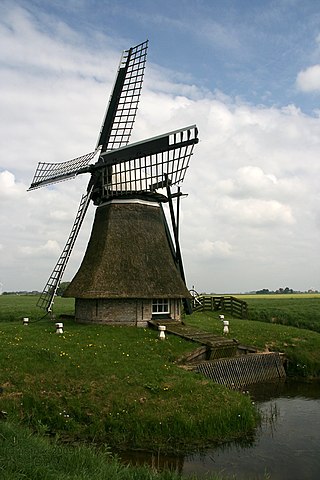
Rispenserpoldermolen is a smock mill in Easterein, Friesland, Netherlands, which was rebuilt in 1994. The mill is listed as a Rijksmonument, number 21572.

The Genezareth or Kloosterpoldermolen is a smock mill in Hallum, Friesland, Netherlands which was built in 1850 and has been restored to working order. The mill is listed as a Rijksmonument, number 15642.

De Hantumermolen is a smock mill in Hantum, Friesland, Netherlands which was built in 1880. The mill has been restored to working order. It is listed as a Rijksmonument, number 38619.
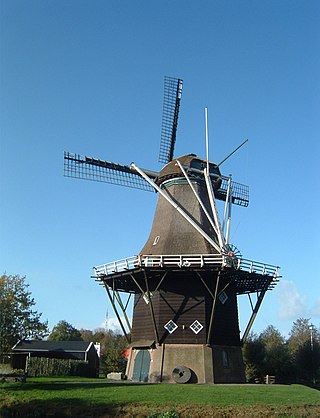
Penninga's Molen or De Jonge Wester is a smock mill in Joure, Friesland, Netherlands which was built in 1900 and is working for trade. It is also used as a training mill. The mill is listed as a Rijksmonument, number 20842.





















